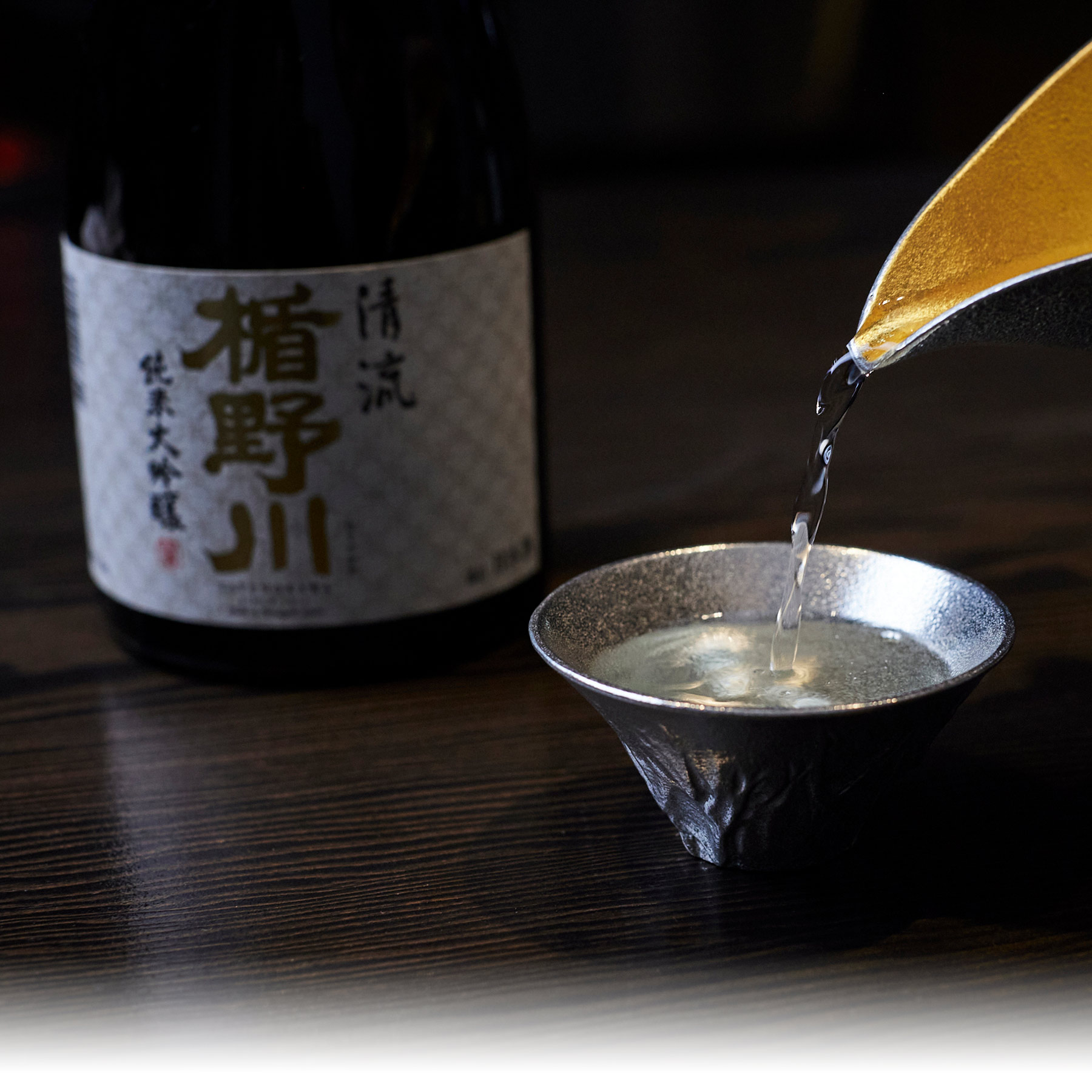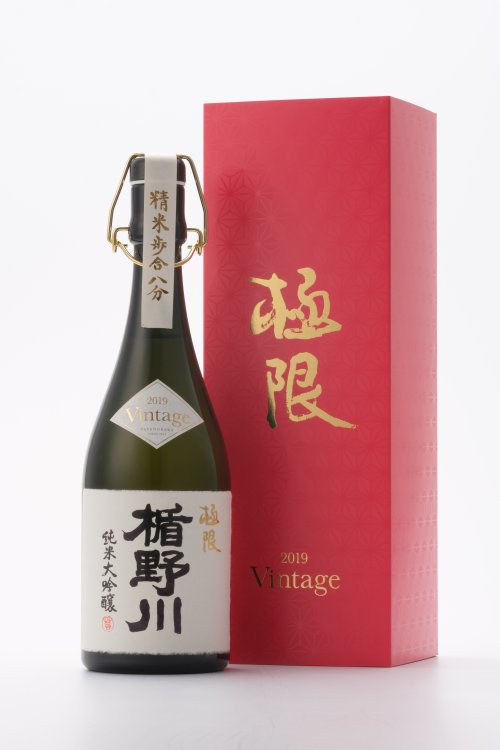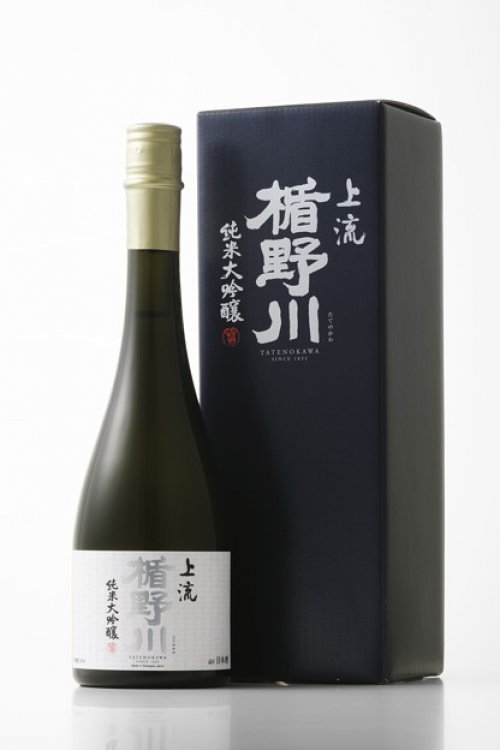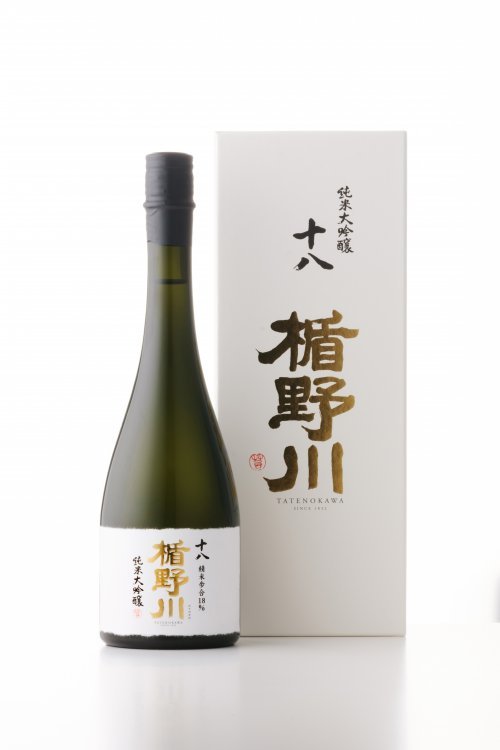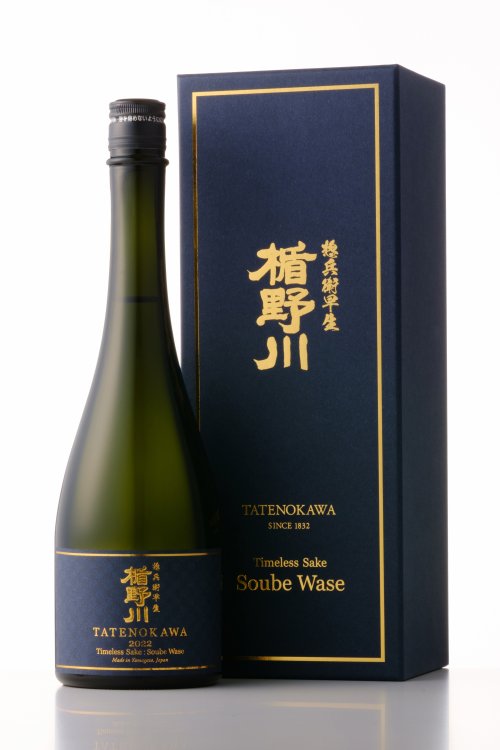Extreme
Most of the top quality products from most breweries are usually polished to 35% rice. Why is 35% polished rice the best sake? Is there any reason for this? At TATENOKAWA, we have been focusing on increasing rice polishing every year. This is because we wanted to quickly break away from the conventional idea in the sake industry that 35% milling rate is the best. and achieve an even higher level. I hear some people say, "Polishing ratio is not the only standard for good sake," but I think this is just a convenient excuse that limits innovation.
The lower the percentage of rice polished, the cleaner, purer, and higher-quality thesake. The process for me is like climbing a mountain:the view from the third level is completely different from the view from the fifth level and the higher you climb, the more beautiful and pleasant it is to look down on the world below in the clearer air. That's the same feeling I aspire to bring to this new sake. I am absolutely convinced that in order to produce and enjoy the clean sake, you have to polish the rice as if you were climbing a mountain, up and up the steps of the polishing ratio. I am absolutely convinced of this.
I am well aware that the rice polishing ratio is not the only thing that adds value to sake. I'm not just trying to stir up competition in rice polishing rates. There is a reason why I recommend polishing the rice more and lowering the percentage of milling ratio. This is because I believe that as the consumption of rice in Japan declines, producing high-milling sake will help increase the consumption of rice and play a key part in local area development.
Sato Jumpei(6th Generation Brewer)
Junmai Daiginjo Kyokugen Limited Quantity
English name: ULTRA
"The Pinnacle of Junmai Daiginjo" - Reaching New Heights in Sake -
Since its debut in 2013, "Kyokugen" has been a flagship product of our brewery, reflecting the skilled craftsmanship and passion of our brewers. This renewed Kyokugen was brewed in our new facility completed in 2021, providing an optimal environment for sake production.
Using 100% Yamada Nishiki, known as the "King of Sake Rice," the rice was meticulously polished over approximately 40 days to 8%, and brewed in small batches with precise control of the Moromi to the nearest 0.1℃. This resulted in a more aromatic, fresh, and well-defined flavor.
For the packaging, we used "Miyama Washi," a traditional craft paper from Yamagata Prefecture, for the label, which expresses both strength and a soft, warm texture. The box has been updated from a wooden box(kiri-bako) to a high-quality white carton, enhancing its elegance and freshness.
Junmai Daiginjo NEHAN 2023 Limited Quantity
"Soube Wase" presents a rustic and serene flavor profile, the extreme heat of 2023 resulted in a firmer grain, challenging us to meticulously extract and develop the sake's flavor profile. The process required careful consideration and creativity to achieve the desired taste.
This sake has a gentle and calm aroma, reminiscent of flowers, with pure sweetness. It does not have flashiness or volume as the newly developed sake rice, but it offers a taste that captures rustic beauty and accumulated history.
The taste changes with every moment. We hope you enjoy this sake while imagining its taste a year ago and anticipating how it will evolve a year from now.
Junmai Daiginjo Kyuryu Limited Quantity
English name: Stream Red
Experience the World of Ultra-High Polished Sake / Recommended as a First Step into Premium Japanese Sake
While it is common for Daiginjo and Junmai Daiginjo from various breweries to have a polishing ratio of around 40% to 35%, Tatenokawa's "Extreme Series" consists of sake brewed with even more polished rice.
"Kyuryu," made from Yamagata-grown Dewasansan polished down to 33%, serves as the entry model in the Extreme Series. It offers a step into the world of ultra-high polished sake and premium Japanese sake. This sake is perfect not only as a reward for yourself but also as a popular gift choice for birthdays, anniversaries, and seasonal gifts like year-end and mid-year presents.
Tatenokawa's sake such as "Kyokugen" and "Komyo," with single-digit polishing ratios, can be considered an extension of "Kyuryu."
JOURYU Junmai-Daiginjo Limited Quantity
Tatenokawa is a pioneer in contract cultivation in Yamagata Prefecture, has long used the sake rice "Miyama Nishiki" in our sake brewing. This rice, grown by local contracted farmers through "special cultivation" methods involving reduced pesticides and chemical fertilizers, is milled to 40% for brewing.
Miyama Nishiki, generally considered a hard type of rice that doesn't dissolve easily, leading to a less varied flavor profile, was the focus of a new challenge. Utilizing accumulated skills and experience, a sake that balances "clarity" and "rich flavor" was successfully created, drawing out Miyama Nishiki's characteristics while enhancing its umami. This sake features a refined, gentle citrus aroma, a crisp, sharp taste, and a quality acidity that pairs well with meals.
Junmai Daiginjo SHODAI-HEISHIROU Limited Quantity
Established in 1832 (Tempo 3), this is a masterpiece named after the first generation brewer of the TATENOKAWA, "HEISHIROU平四郎".
About 100 years have passed since the birth of Yamada Nishiki in 1923, but no sake rice that surpasses it has yet been born, while maintaining as the king of sake rice. Junmai Daiginjo SHODAI-HEISHIROU was produced with the desire to "create a sake bearing the name of the first generation using sake rice that is acknowledged as the best in the history of Japanese sake culture even today, and to pass on to the future the origins of the brewery's establishment".
It is a masterpiece that offers a modest but high-quality presence and a taste of perfection with a natural deliciousness that is ideal for celebrating a milestone or as a gift for a special someone.
Junmai Daiginjo 18 Limited Quantity
English name: EIGHTEEN
A Junmai Daiginjo that with its rice-polishing ratio is the pinnacle of sake.
Made with rice that has been polished down to 18%, it takes extravagance to the extreme.The elegant aroma is gorgeous and gentle, the soft sweetness of the rice spreads smoothly and deeply on palate.
It takes pride of place in the "TATENOKAWA" line-up as the jewel in the crown of sake.
SOUBE WASE 2022 Limited Quantity
Over three years, ancient rice from 150 years ago was revived, and after three more years of refining the brewing process, Soube Wase was finally born. It is from the local Shonai native rice, which is used only by Tatenokawa and holds the prideful name of Soube Wase.
Soube Wase, crafted from rice untouched by varietal improvements for 150 years, stands out from the rest. It offers a subtle steamed rice aroma, a complex and profound taste, and the inherent umami of the rice. Soube Wase, truly born from rice, perfectly accompanies various cuisines, enhancing your dining experience.
With aging, it develops a deeper mellowness and reveals a range of flavors through temperature variations. Indulge in the exquisite Soube Wase, tailored to your preferences, and experience its exceptional richness.
Discover the story of Soube Wase
